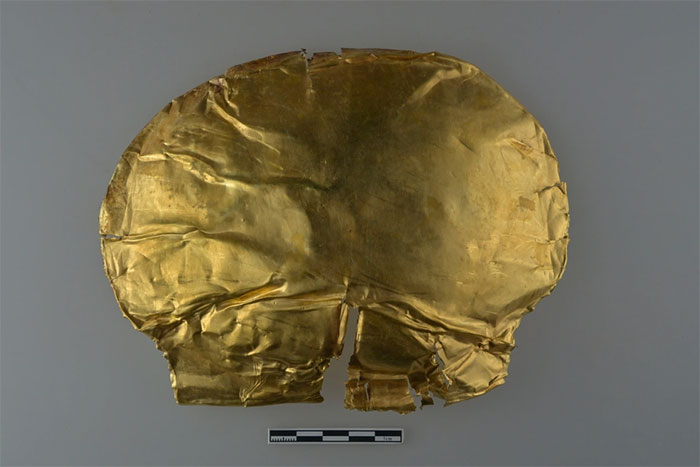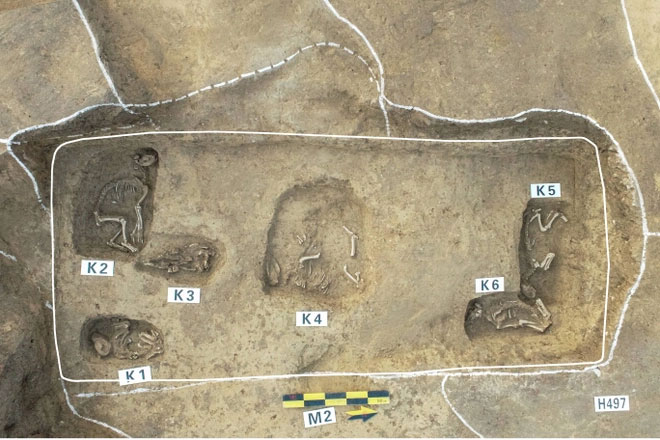New discoveries at four archaeological sites in China provide additional insights into the early civilizations of the country, Chinese officials report.

Gold mask from the Shang dynasty excavated in Zhengzhou, Henan province. (Photo: CGTN).
According to the South China Morning Post on October 2, the National Cultural Heritage Administration of China (NCHA) has announced groundbreaking findings at four archaeological sites that enhance our understanding of the Xia and Shang dynasties, believed to be the first civilizations in China.
The Xia dynasty (approximately 2070-1600 BC) is often referred to as the first dynasty of China, although evidence of its existence primarily comes from archaeological processes and secondary ancient texts.
In contrast, the Shang dynasty (1600-1046 BC) is the first Chinese civilization documented in history.
First Discovery: In September, archaeologists in Henan province uncovered a gold mask believed to belong to the Shang dynasty, which is the most prominent artifact found during the excavation, alongside 200 other valuable bronze and jade artifacts.
This mask is thought to predate the gold mask discovered at the Sanxingdui site in Sichuan province. The Shang dynasty mask was found in the tomb of a noble and is believed to have been used in funerary rites.

Photo of the archaeological site of the Shang dynasty tomb in Zhengzhou, Henan province. (Photo: CGTN).
Second Discovery: At the Erlitou archaeological site, regarded as the clearest evidence proving the existence of the Xia dynasty, researchers have uncovered the architecture of the city, including roads considered to be “ancient highways” and sidewalks for pedestrians from ancient times.
“The purpose of this excavation is to explore the system in the capital during ancient times, the economy, and rituals,” CGTN quoted the NCHA as saying.
Third Discovery: Defensive architecture of ancient Chinese civilization was discovered in Houchengzui, Inner Mongolia. According to the NCHA, archaeologists found two underground passages and a moat, believed to have been constructed by people of the ancient civilization for attack or defense.
Finally, the archaeological site in Shanxi province, dating back nearly 4,000 years, is thought to be the boundary between the western and central regions of ancient China. This site is also known as the Longshan settlement, located along the Yellow River in Shanxi. The Longshan culture is part of the early civilization in China, renowned for its pottery-making.

















































